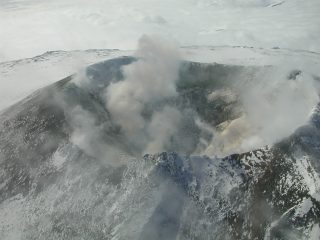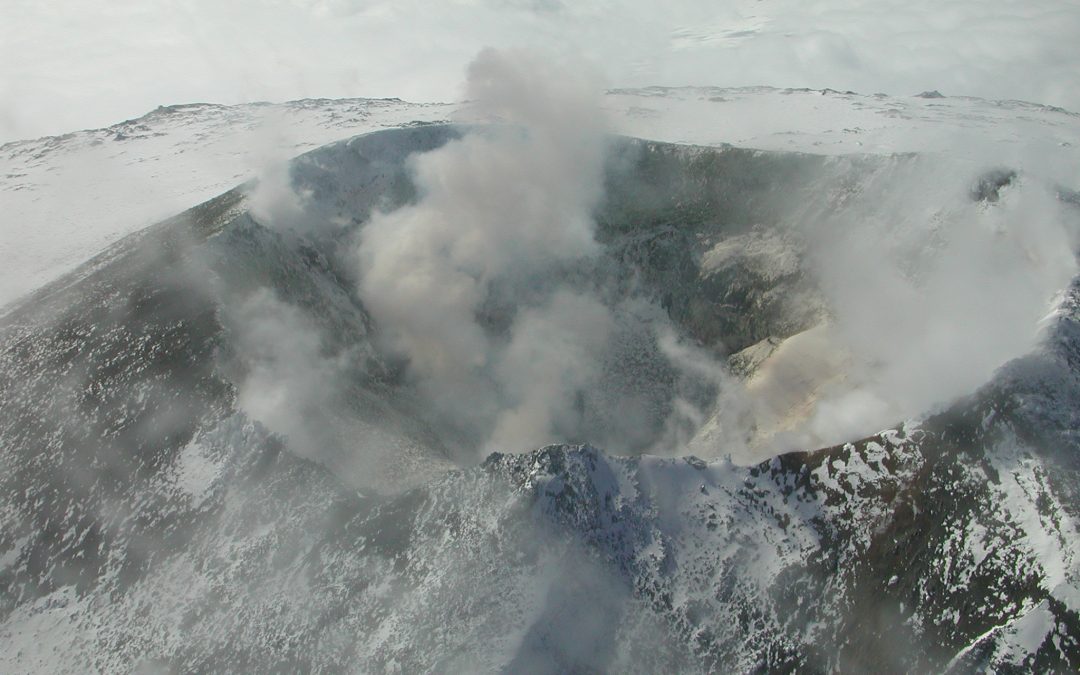 The prestigious, peer-reviewed journal Nature Geoscience today published a University of Wisconsin Oshkosh geologist’s research involving tiny grains of sand that suggest a significant spike in carbon erupted from volcanoes about 575 million years ago.
The prestigious, peer-reviewed journal Nature Geoscience today published a University of Wisconsin Oshkosh geologist’s research involving tiny grains of sand that suggest a significant spike in carbon erupted from volcanoes about 575 million years ago.
UW Oshkosh geology professor Timothy Paulsen led a team of researchers from Michigan Technological University and ETH Zurich to study the recycling of carbon from Earth’s deep interior to its surface through volcanic activity. They traced the age and chemical signatures stored in tiny zircon grains—some smaller than the width of an average human hair—collected in Antarctica.
“Our research has implications for better understanding how ancient solid-Earth processes have influenced Earth’s climate during the transition from a Snowball Earth state when it was completely frozen over to its hothouse state that characterized the Cambrian time period,” Paulsen explained.
 While previous research has indicated that the formation of greater numbers of volcanoes during this time period “belted out more carbon,” Paulsen’s team took the next step toward characterizing the types of volcanoes from which carbon was erupted.
While previous research has indicated that the formation of greater numbers of volcanoes during this time period “belted out more carbon,” Paulsen’s team took the next step toward characterizing the types of volcanoes from which carbon was erupted.
Since those volcanoes no longer exist because they have been worn down by weathering, the researchers turned to analyzing the zircon grains, some of which eroded from these ancient land forms.
“The story is in the grains of sand,” Paulsen said.
Today, alkaline volcanoes like Mount Erebus in Antarctica and Mount Etna in Italy put out more carbon than other volcanoes. This is the same type of volcanism the researchers identified in the ancient zircons.
Researchers with the ETH Zurich lab in Switzerland analyzed the uranium-lead and trace element chemistries of the zircon sand grains, which were used to determine their ages and likely rock sources.
Michigan Tech assistant geology professor Chad Deering, a coauthor on the journal article, said the scientists built a timeline from zircon samples spanning “many hundreds of millions of year.”
“In essence, we discovered that there was a particularly significant pulse of alkaline magmatism, suggesting an increase in carbon emitted prior to the Cambrian explosion, the most important diversification of life that has yet to occur.”
The research reported in the Nature Geoscience journal article, “Evidence for a spike in mantle carbon outgassing during the Ediacaran period,” was funded, in part, by the National Science Foundation, a UWO Faculty Development Grant and Paulsen’s 2012 Edward M. Penson Endowed Professorship.
Paulsen, who joined the UW Oshkosh geology faculty in 1999, teaches courses, such as geologic field methods, geophysics and geotectonics, structural geology and tectonics, and field geology.
Learn more:

